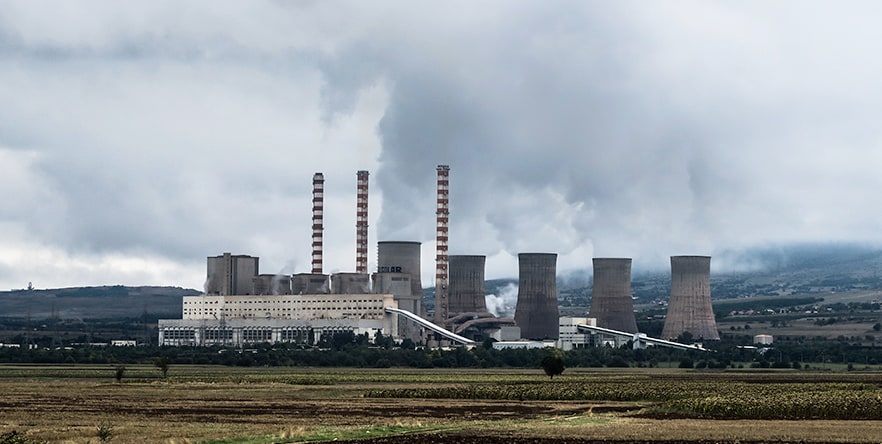Micro Grids
Consulting
Solutions

“Microgrids are localized grids that can disconnect from the traditional grid to operate autonomously.” Microgrids are self-sufficient power systems that generate energy from renewable energy resources such as solar panels, wind turbines, energy storage units, and small-scale hydro turbines, thus making them a hybrid energy source. Microgrids can act autonomously, or synonymously when they are tied to a utility power grid. When operating as standalone energy systems they use software controls and battery energy storage, and other technologies to efficiently distribute power and regulate energy sources.
The renewable energy resources used in a microgrid system are selected based on the geographical site, which determines availability of these natural resources. The biodiversity of the natural environment is what allows us to create hybrid power systems, by adapting multiple forms of natural energy sources from land-based ecosystems such as grasslands and forests, freshwater ecosystems such as rivers, lakes and wetlands, as well as coastal and marine ecosystems.
Who can benefit
Microgrids have been a catalyst in the clean energy transition and implementation of net-zero carbon initiatives. They are a renowned force in the energy transition for their expansive applications across many industries.
Microgrids have traditionally been used in industries where grid reliability is challenged at regular intervals by extreme weather and aging infrastructure to provide energy in cases of emergency. These legacy systems used to be limited in size and capacity and were powered by a limited distribution network that relied on greenhouse gas emitting power sources.
Modern microgrid systems have evolved and now have a wide array of applications and benefits. These powerful systems can now combine renewable energy sources and serve many functions, within the framework of large metropolitan areas to remote communities. Microgrids are an important part of energy infrastructure planning on the path forward. Industry leaders, communities, schools, households and many other organizations are integrating microgrids as a part of their energy infrastructure systems to advance sustainability, optimize energy efficiency, and improve resilience.
The market for microgrids is an expansive market with opportunities continuously arising for communities and organizations in any industry that want to improve energy efficiency and reduce their carbon footprint.
Microgrids are modular systems that can be applied to fit the unique requirements of any environment. Whether the focus is on communities, transportation, critical infrastructure, education institutions, agricultural facilities or more, microgrids are among the most effective and versatile electrical infrastructure systems.
The next step in the evolution of self-sustaining renewable energy storage is the adoption of this technology, and microgrids are paving the way for these benefits to be more accessible and achievable than ever before.
Why Microgrids?
The main propellers of developing the concept of microgrids are the environmental issues caused by burning fossil fuels in the power generation industry and preventing power loss by generating electricity locally at the load site. Microgrids can also increase the reliability of conventional power systems and add more flexibility to the whole power system. Microgrids will operate in various control architectures to improve system resilience, during normal and emergency operating conditions, enhance operational flexibility and contribute to decarbonization. There are also various co-benefits such as, cost reduction, support to the bulk power grid, local economic development, and support to critical end-use loads where access to the main power grid is not available.
Benefits of our Renewable Distributed Power Systems
- A solution to support the decarbonization of energy infrastructure and be an active participant to fight climate change and enhance clean healthy living environments
- Reliable systems that support current and future energy demand needs
- Withstand and bounce back swiftly from system shocks with minimum disruption to supply
- Increase energy system resilience due to their unique capability to quickly absorb, store and re-inject electricity
- Lower the risk and impact of power disruptions on operations caused by severe weather events and natural disasters
- Universal access to reliable and affordable energy
- Suitable for rural and remote communities
- Government incentives and programs help lower the cost of implementation
Sustainability
- A solution to support the decarbonization of energy infrastructure and be an active participant to fight climate change and enhance clean healthy living environments
Energy security
- Reliable systems that support current and future energy demand needs
- Withstand and bounce back swiftly from system shocks with minimum disruption to supply
- Increase energy system resilience due to their unique capability to quickly absorb, store and re-inject electricity
- Lower the risk and impact of power disruptions on operations caused by severe weather events and natural disasters
Energy Equity
- Universal access to reliable and affordable energy
- Suitable for rural and remote communities
- Government incentives and programs help lower the cost of implementation
Economic benefits: stable energy prices, reduced cost, energy independence, and the potential to collect income from energy production
- Cost-effective high efficiency energy systems that optimize energy consumption using control systems to monitor and manage performance
- Economic alternative to traditional energy provisions that reduces energy costs and carries a shorter implementation timeframe
- Localized systems that optimize power demand, consumption, and management by offering tailormade energy supply solutions
- A compelling feature of the microgrid is the ability to separate and isolate itself, operating autonomously from the traditional electrical grid
- Microgrids allow generation, storage, and loads to seamlessly operate in an autonomous fashion, balancing out voltage and frequency issues with recent technology advances
- Energy independence management take control of energy supply
- Improve local management of power supply and demand which can help improve overall production efficiency
- Energy delivery model that can be scaled to meet the demands of your project; does not dictate size, scale, or growth rates
- Hybrid capacity allows this form of distributed power system to be built out incrementally and construct a system “a la carte” style with various power sources
- Compatible with the existing centralized grid, serving as a functional unit that assists in building out the existing system, helping to maximize the operation and stability of the main grid
- Use in conjunction with evolving technologies to achieve economies of scale
- Technology neutral able to tap a diverse mix of renewables and fossil fuel sources
- Resource to accelerate the phase out of green house gas emitting non-renewable sources
- Energy delivery model that can be scaled to meet the demands of your project; does not dictate size, scale, or growth rates
- Hybrid capacity allows this form of distributed power system to be built out incrementally and construct a system “a la carte” style with various power sources
Efficiency
- Cost-effective high efficiency energy systems that optimize energy consumption using control systems to monitor and manage performance
- Economic alternative to traditional energy provisions that reduces energy costs and carries a shorter implementation timeframe
- Localized systems that optimize power demand, consumption, and management by offering tailormade energy supply solutions
Autonomy
- A compelling feature of the microgrid is the ability to separate and isolate itself, operating autonomously from the traditional electrical grid
- Microgrids allow generation, storage, and loads to seamlessly operate in an autonomous fashion, balancing out voltage and frequency issues with recent technology advances
- Energy independence management take control of energy supply
- Improve local management of power supply and demand which can help improve overall production efficiency
- Energy delivery model that can be scaled to meet the demands of your project; does not dictate size, scale, or growth rates
- Hybrid capacity allows this form of distributed power system to be built out incrementally and construct a system “a la carte” style with various power sources
Compatibility
- Compatible with the existing centralized grid, serving as a functional unit that assists in building out the existing system, helping to maximize the operation and stability of the main grid
- Use in conjunction with evolving technologies to achieve economies of scale
- Technology neutral able to tap a diverse mix of renewables and fossil fuel sources
- Resource to accelerate the phase out of green house gas emitting non-renewable sources
Autonomy
- Energy delivery model that can be scaled to meet the demands of your project; does not dictate size, scale, or growth rates
- Hybrid capacity allows this form of distributed power system to be built out incrementally and construct a system “a la carte” style with various power sources

Use cases and applications
Microgrids are able to support a wide range of needs. See below some common instances where microgrids are implemented:
- Fossil and Coal Phase Out
- Orphaned Wells
- Remote Locations
Take a positive and profitable approach to make your company or institution stand out as an environmental leader.
